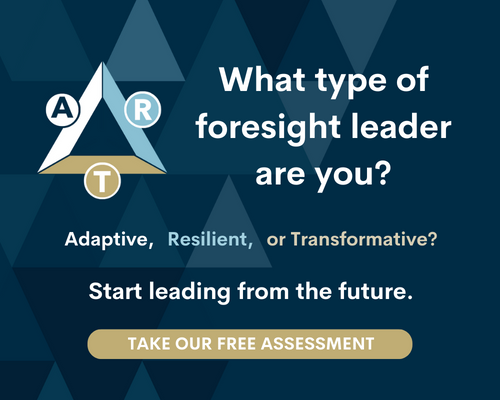5 Common Reasons Why Foresight Efforts Fail

An excerpt from The Guide to Natural® Foresight Framework available for download here.
Why do Foresight Efforts Fail?
Creating a sustainable foresight practice for yourself or within our organizations can be a challenge. Our outdated systems may be faltering, but they are holding on for dear life. There are lessons, however, in failed attempts at foresight implementation. In our experience, there are several common pitfalls which should be avoided when pursuing foresight integration.
Most foresight efforts fail because…
- They believe the sky is always falling. It’s tempting to focus foresight efforts solely on the mounting threats on the horizon. Fear sells. While fear-based approaches may have success in the short-term, achieving sustainable results requires that we move past dystopian views of the future which can leave our organizations more fragile. Instead of focusing only on the future we want to avoid, engage stakeholders in conversations about what type of future they want to create.
- They leverage mechanical approaches. Everyone loves a linear process with a finite set of steps. Unfortunately, these overly simplistic models are no match for our environment of accelerating complexity. We do ourselves (and our organizations) no favors adopting reductionist approaches that succeed only in creating a false sense of security. Leveraging more organic methods like those within the Natural Foresight® Framework result in resilient, adaptive, and transformative decisions and outcomes.
- They operate in a silo. Sequestering foresight efforts to a team or department often dooms it to failure. Not only does this strategy leave the work vulnerable to the next round of budget cuts, but this type of structure is in direct opposition to the notion of democratizing the future. Framed another way, suppose the foresight team does produce powerful, provocative insights. It’s likely that, without the proper exposure to foresight, the organizational antibodies will attack the results and render them useless. While not everyone in an organization needs training on developing scenarios, empowering each individual with the sense, mesh, and transform mindsets will create a culture of future thinkers ready to embrace an uncertain future.
- They stop at the tip of the iceberg. Trends, especially those in technology, are an enticing and tangible manifestation of a potential future. However, when our foresight efforts stop at trends, they run the risk of becoming “executive entertainment,” chronicling the latest fads or bright shiny objects for leaderships’ “oh’s and ah’s.” To create real change, trends must be analyzed to uncover societal value shifts and potential future implications to society.
- They focus too much on the “future.” Foresight efforts must inform present-day decision making. Creating scenarios for the year 2050, for example, should not be the planning equivalent of burying a time capsule only to wait several decades to uncover it and see if we were right. Strategic Foresight tools create a platform for discussion and provide a bridge from today’s urgent requirements to tomorrow’s aspirations.

